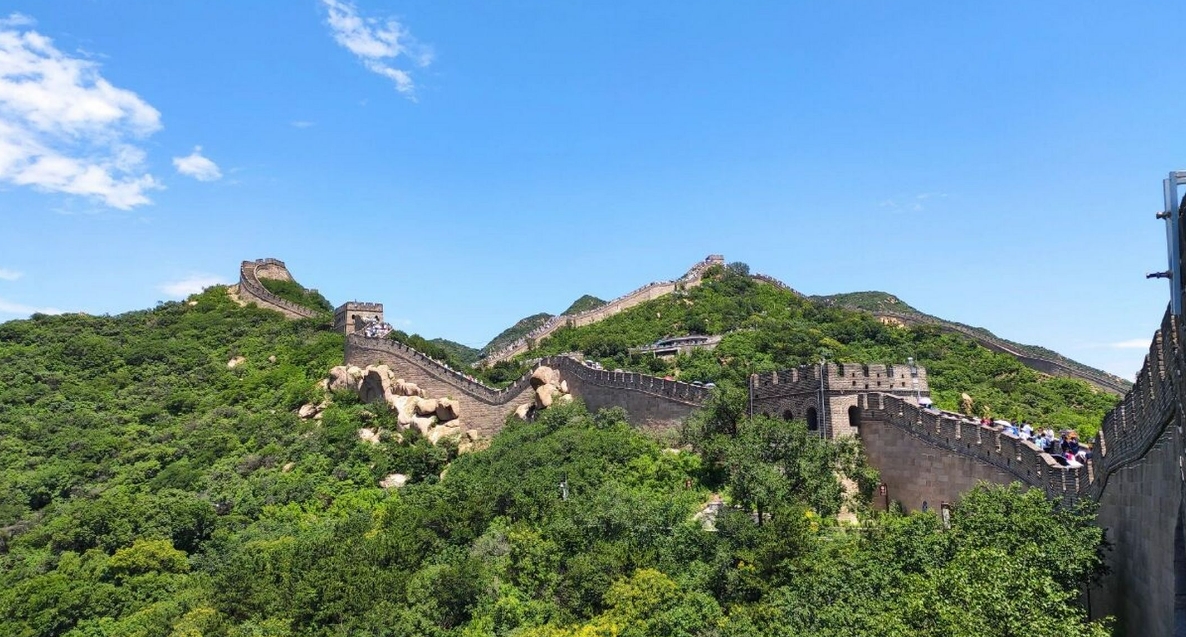
The Great Wall: A Guardian of Civilization in the North
The Great Wall of China, a majestic dragon winding across the vast expanse of northern China, is one of the greatest wonders of human civilization. Its existence is no accident but the result of thousands of years of construction and reinforcement for various purposes. Throughout history, the Great Wall has served three primary functions: defending against invasion, establishing a psychological barrier between northern and southern civilizations, and ensuring the safety of the Silk Road trade route.
1. Defense Against Invasions: The Iron Backbone Protecting Chinese Civilization
Since ancient times, northern China has been home to nomadic tribes who lived a nomadic lifestyle, starkly different from the agrarian society of the Han Chinese in the south. Due to scarce resources and harsh living conditions, these nomadic tribes frequently raided the Central Plains, plundering food and valuables, posing a severe threat to the peace and stability of the region.
To defend against these incursions, the ancestors of the Han Chinese began constructing defensive structures from very early on. From the fragmented walls built by individual states during the Warring States Period to the first unified Great Wall erected by Emperor Qin Shi Huang, and further strengthened and expanded by later dynasties like the Han and Ming, the Great Wall has served as a steadfast line of defense for the Chinese nation.
The Great Wall's presence not only effectively blocked the cavalry of nomadic tribes but also bought precious time for the Central Plains dynasties to mobilize their armies and organize effective defenses, thereby safeguarding peace and fostering development in the region.
2. A Psychological Barrier Between North and South: The Collision and Fusion of Two Ways of Life
The Great Wall is more than just a physical fortification; it represents a psychological boundary dividing north from south and delineating civilizations. It symbolizes the dividing line between agrarian and nomadic civilizations, with two distinct lifestyles colliding and merging on either side.
South of the Great Wall lay the heartland of agrarian civilization, where people relied on the land and lived a settled life. North of the wall stretched the world of nomadic tribes, roaming freely with their livestock.
While the Great Wall's construction, to a certain extent, hindered the exchange between these two civilizations, it also facilitated their interaction in politics, economy, and culture. For instance, the opening of the Silk Road facilitated East-West cultural exchange, which significantly contributed to the development of Chinese civilization.
3. Safeguarding the Silk Road: A Bridge Connecting East and West
With the opening of the Silk Road during the Han Dynasty, the Great Wall assumed the crucial responsibility of protecting this vital trade route connecting East and West. Numerous strategic passes and beacon towers dotted along the Silk Road were built upon the foundation of the Great Wall, forming a comprehensive defense system.
The Wall's garrisons were tasked not only with defending against nomadic invasions but also with suppressing bandits along the Silk Road, ensuring the safety of this trade artery. The Silk Road's smooth operation, allowing cultural exchange and fusion between East and West, can be attributed to the protection provided by the Great Wall, which ultimately facilitated the spread of Chinese civilization to the world.
In conclusion, the Great Wall is a crystallization of the wisdom of ancient Chinese laborers and a symbol of the Chinese nation's spirit. It is more than just a defensive structure; it is a historical monument that has witnessed the rise and fall of Chinese civilization and carries the weight of its rich history.
Q&A:
1. Why was the Great Wall built in northern China?
The Great Wall was built in northern China primarily to defend against invasions from nomadic tribes who lived in the region and frequently raided the Central Plains.
2. What were the main purposes of the Great Wall?
The Great Wall served three primary purposes: defending against invasions, establishing a psychological barrier between northern and southern civilizations, and ensuring the safety of the Silk Road trade route.
3. How did the Great Wall impact the development of Chinese civilization?
The Great Wall protected the Central Plains, allowing for peace and development. It also facilitated cultural exchange through trade routes like the Silk Road, contributing to the growth and spread of Chinese civilization.